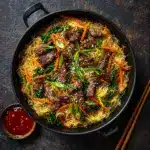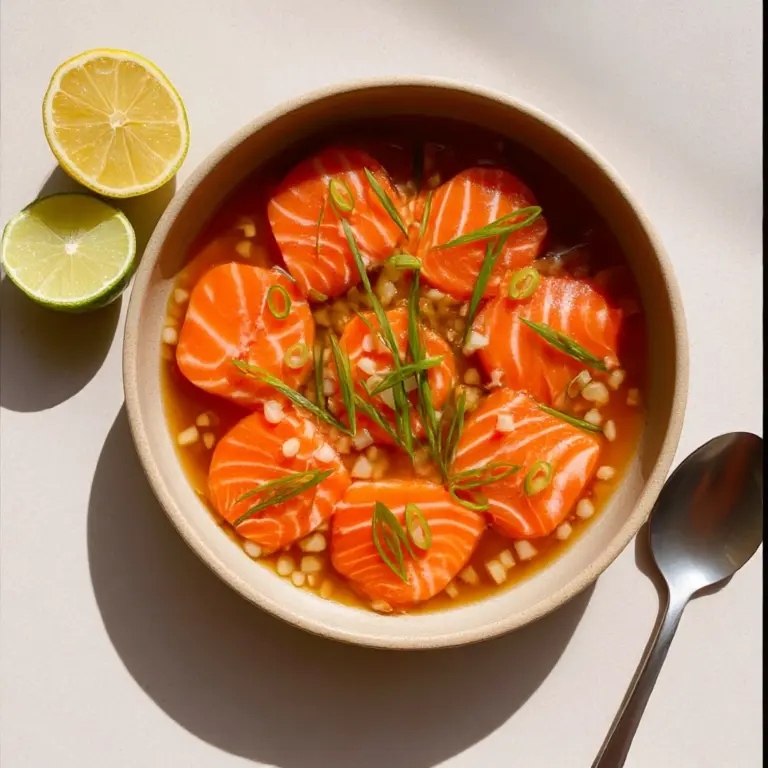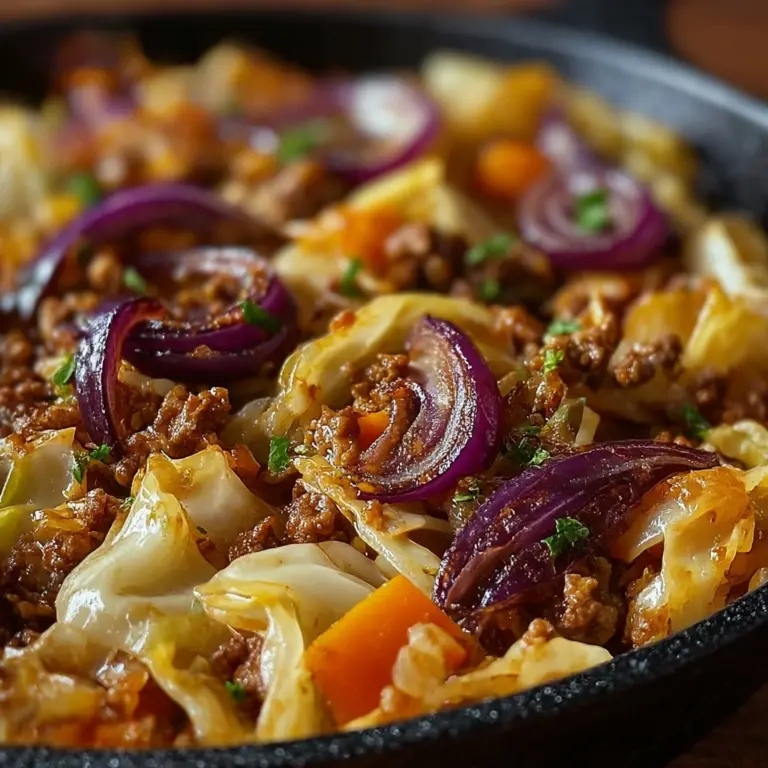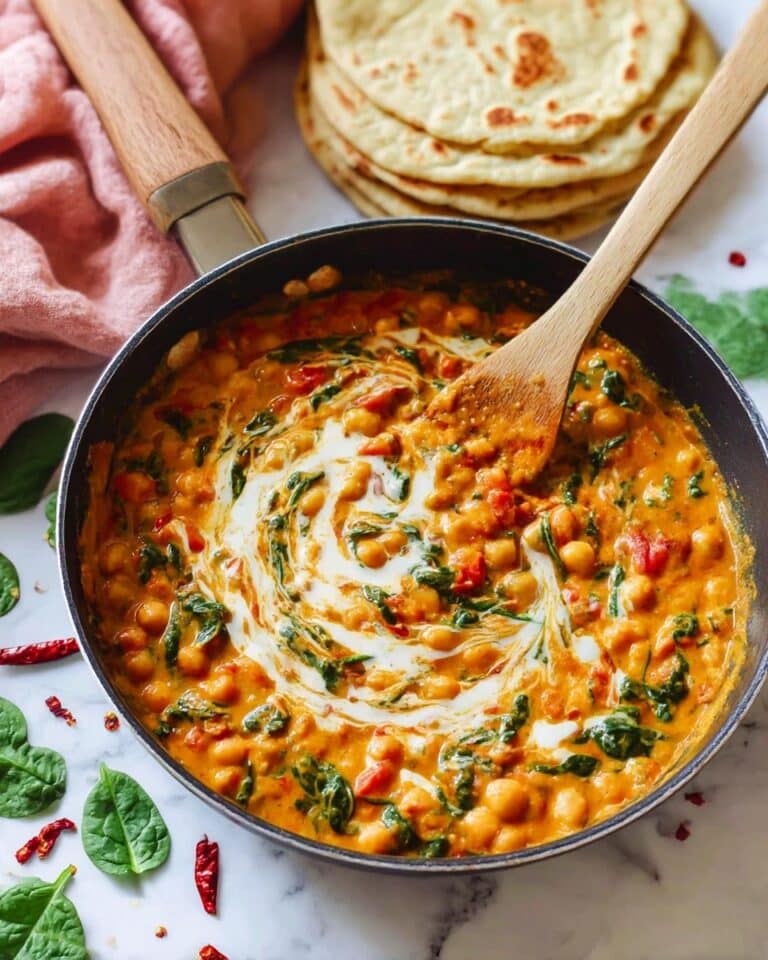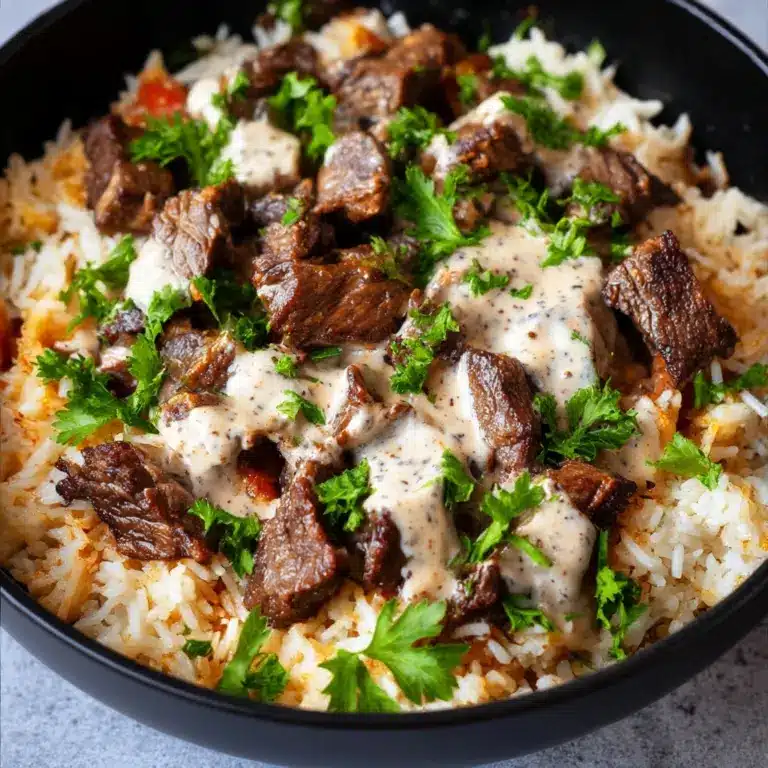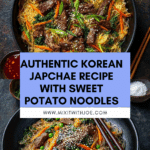Japchae Recipe
If you’ve ever tasted Japchae, you know it’s a magical harmony of sweet potato glass noodles, tender meat, and colorful vegetables tossed in a subtly sweet, savory sauce. This Korean classic is not just a meal but an experience—a celebration on a plate that’s both comforting and elegantly vibrant. Whether you’re new to Korean cuisine or a seasoned fan, mastering this dish will add a dazzling, nutritious favorite to your cooking repertoire that’s perfect for everyday meals or special occasions.
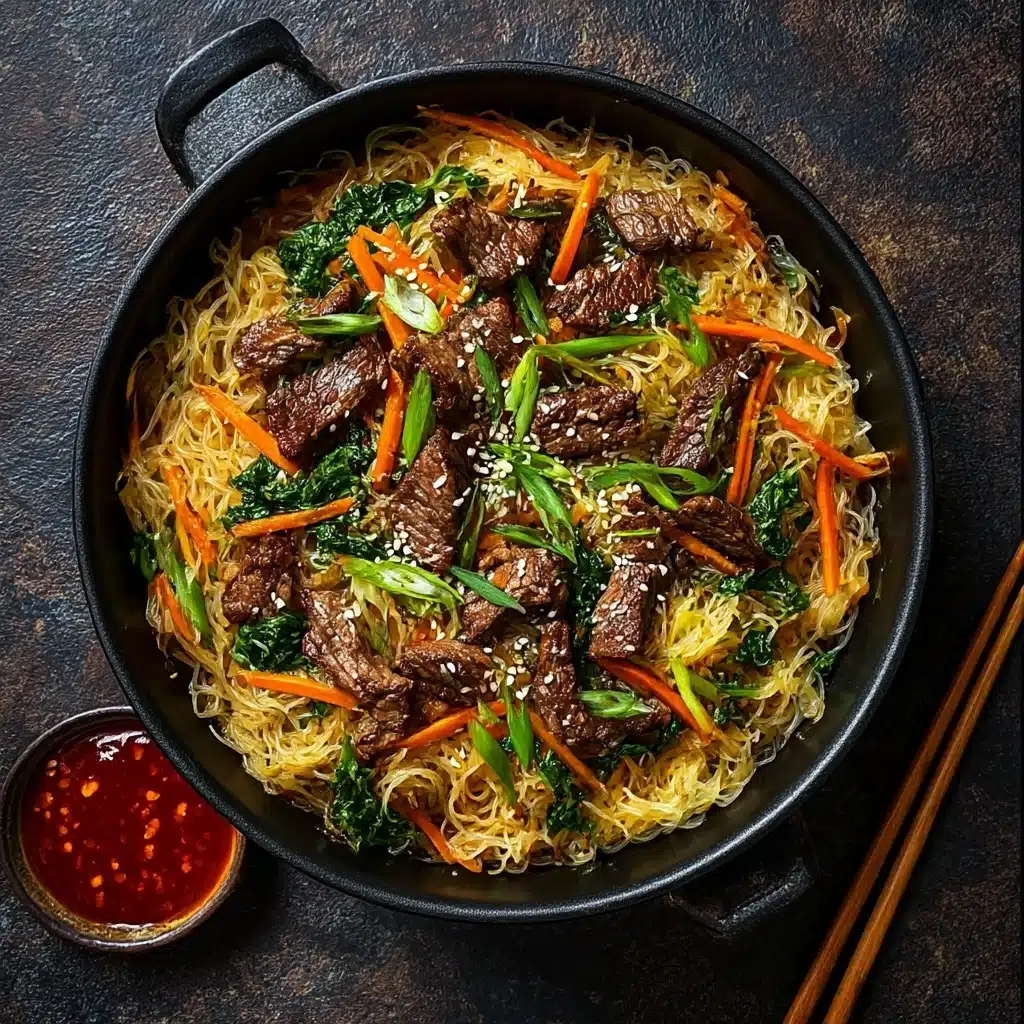
Ingredients You’ll Need
The beauty of Japchae lies in its simplicity and the way each ingredient lends its own unique character to the dish. Fresh vegetables give crunch and vivid colors, the beef adds savory richness, and the sweet potato noodles bring that iconic chewy texture. Every single element is essential to creating the perfect balance of flavors and textures.
- Thin-sliced beef (2 lb): Choose lean cuts and slice thinly for tender, flavorful bites that soak up the sauce beautifully.
- Korean sweet potato noodles (1 lb): These glass noodles provide the signature chewy texture that makes Japchae so irresistible.
- Carrots (3 medium, julienned): Their natural sweetness and bright orange color enhance both taste and appearance.
- White onion (1 large, thinly sliced): Adds a subtle sweetness and soft texture that balances the dish.
- Green onions (1/2 bunch, chopped): Fresh and sharp, these bring brightness and color to the finished dish.
- Garlic cloves (6, minced): Infuses the stir-fry with that irresistible aromatic depth.
- Spinach leaves (1/2 lb): Adds a mild earthiness and a lovely green contrast, while providing nutrients.
- Sesame oil (4 tbsp, divided): Offers a warm, nutty fragrance that’s quintessential to authentic Japchae.
- Olive oil (1 tbsp): Used for cooking vegetables and noodles, it keeps everything tender without overpowering the flavors.
- Soy sauce (6 tbsp): The salty-sweet backbone of the sauce; tamari works well as a gluten-free alternative.
- Brown sugar (3 tbsp): Balances the savory with gentle sweetness for a perfectly harmonious sauce.
How to Make Japchae
Step 1: Cook the Sweet Potato Noodles
Begin by bringing a large pot of water to a vigorous boil and add a little olive oil—this helps keep the noodles from sticking. Toss in the Korean sweet potato noodles and cook them for just 5 to 6 minutes until tender yet delightfully chewy. Drain them well and set aside. Properly cooked noodles are the foundation of great Japchae, so don’t overcook.
Step 2: Sauté the Beef
In a hot skillet over high flame, cook the thin-sliced beef quickly to achieve a lovely brown sear. Season it halfway through with a mix of soy sauce, sesame oil, and brown sugar—this infuses the meat with both savory depth and a touch of sweetness. Once cooked through, remove the beef and keep it warm; this step ensures every bite bursts with flavor.
Step 3: Stir-Fry the Vegetables
Use another pan and heat the olive oil before adding the julienned carrots and thinly sliced onions. Cook until the carrots soften and the onions turn translucent, then add the rest of the soy sauce, sesame oil, and brown sugar, stirring constantly for an even coating. Mix in the minced garlic and green onions, cooking for an additional minute to release their aroma.
Step 4: Wilt the Spinach and Combine
Toss in the spinach and stir it until just wilted—overcooking would cause it to lose that fresh flavor and vibrant color. Now, combine all your cooked veggies and beef with the noodles in a large mixing bowl. Toss them gently but thoroughly to ensure every strand of noodle is coated in the luscious sauce, bringing the dish together in perfect harmony.
How to Serve Japchae

Garnishes
Japchae shines even brighter when garnished with some chopped green onions or a sprinkle of toasted sesame seeds. These simple touches add an extra layer of flavor, freshness, and a bit of visual flare that makes the dish irresistible right away.
Side Dishes
Japchae pairs wonderfully with light, complementary Korean sides such as kimchi, pickled radishes, or steamed white rice. These sides balance the sweetness and richness of the noodles and beef, creating a full, memorable meal experience that feels authentically Korean and satisfying.
Creative Ways to Present
For a stunning presentation, try serving Japchae in individual lettuce cups for a fun, handheld treat or atop a bed of mixed greens to add freshness. Another great idea is to mold it into small portions using ramekins, then plate individually for a festive dinner party vibe that will wow your guests.
Make Ahead and Storage
Storing Leftovers
Japchae keeps well in an airtight container in the refrigerator for up to 3 days. Because the noodles absorb liquid over time, it can become a bit denser but still tastes delicious when reheated. Make sure to store it separately from any garnishes to keep the textures fresh.
Freezing
While freezing Japchae is possible, it’s not typically recommended because the texture of the sweet potato noodles can become mushy upon thawing. If you must freeze it, flash-freeze in a single layer and consume within one month for best quality.
Reheating
To reheat, the best method is a quick sauté in a lightly oiled pan or a gentle microwave heat, stirring occasionally. Adding a small splash of water or sesame oil helps prevent the noodles from drying out and keeps flavors lively.
FAQs
Can Japchae be made vegetarian or vegan?
Absolutely! Simply swap the beef for firm tofu or more mushrooms and stick to soy sauce instead of fish-based sauces. The veggies and noodles carry the dish’s iconic flavors well without meat.
What noodles are best for Japchae?
Sweet potato starch noodles are the authentic choice, prized for their chewy texture and translucent look. They’re gluten-free and have that perfect bounce unlike any other noodle.
Is Japchae served hot or cold?
Japchae is typically served warm, which really brings out its savory-sweet flavors, but it can also be enjoyed at room temperature as a refreshing dish during warmer weather.
How long does Japchae take to prepare?
From start to finish, expect about one hour, including prep and cooking time. It’s a bit of a labor of love, but well worth it for the delicious payoff.
Can I add other vegetables to Japchae?
Definitely! Bell peppers, mushrooms, zucchini, and bean sprouts all make excellent additions, enhancing both the taste and nutritional profile while maintaining the classic Japchae vibe.
Final Thoughts
Making Japchae at home is such a rewarding culinary adventure that fills your kitchen with mouthwatering aromas and your plate with festive colors. This dish is a wonderful way to celebrate Korean flavors in a comforting, approachable way. I encourage you to try this recipe and watch as it becomes a beloved staple in your cooking rotation, bringing joy to family meals and special occasions alike.
PrintJapchae Recipe
Japchae is a traditional Korean stir-fried noodle dish made with sweet potato glass noodles, tender sliced beef, a vibrant mix of vegetables, and a sesame-soy sauce. This dish offers a delicious balance of sweet and savory flavors with a unique chewy texture from the glass noodles. Often served during special occasions and festive gatherings, Japchae is as visually appealing as it is flavorful, symbolizing prosperity and well-being.
- Prep Time: 30 minutes
- Cook Time: 30 minutes
- Total Time: 1 hour
- Yield: 10 servings 1x
- Category: Main Course
- Method: Stir-frying and boiling
- Cuisine: Korean
- Diet: Halal
Ingredients
Protein
- 2 lb thin-sliced beef (or substitute with chicken, tofu, or shrimp)
Noodles
- 1 lb Korean sweet potato noodles (glass noodles)
Vegetables
- 3 medium carrots, julienned
- 1 large white onion, thinly sliced
- 1/2 bunch green onions, chopped
- 1/2 lb spinach leaves
- 6 garlic cloves, minced
Oils & Sauces
- 4 tbsp sesame oil (divided)
- 1 tbsp olive oil
- 6 tbsp soy sauce (or tamari for gluten-free)
Sweetener
- 3 tbsp brown sugar
Instructions
- Cook Noodles: Bring a large pot of water to a boil and add a drizzle of olive oil. Add the sweet potato noodles and boil for 5-6 minutes until translucent and soft. Drain the noodles and set aside.
- Cook Beef: Heat a skillet over high heat and cook the thinly sliced beef until browned. While cooking, season the beef with half of the soy sauce, 2 tablespoons of sesame oil, and 1.5 tablespoons of brown sugar. Once cooked, set the beef aside.
- Prepare Vegetables: In another skillet, heat the remaining olive oil. Add the julienned carrots and thinly sliced onion and sauté until softened, about 4-5 minutes. Add the remaining soy sauce, 2 tablespoons of sesame oil, and 1.5 tablespoons of brown sugar. Stir to combine.
- Add Aromatics and Spinach: Mix in the minced garlic and chopped green onions, cooking for another minute until fragrant. Then add the spinach and stir until wilted, about 2 minutes.
- Combine All Ingredients: Add the cooked vegetables and beef to the drained noodles in a large bowl. Toss everything thoroughly to evenly distribute the flavors and coat the noodles with the sauce.
- Serve: Serve the Japchae warm, optionally garnished with extra green onions for added freshness and color.
Notes
- Substitute beef with chicken, tofu, or shrimp for alternative protein options.
- Use tamari instead of soy sauce to make the dish gluten-free.
- Adjust the amount of brown sugar according to your preferred sweetness level.
- Rinse spinach briefly with cold water after wilting if you prefer milder spinach flavor.
- Japchae is best enjoyed fresh but can be reheated gently to preserve texture.
- For a vegetarian version, omit the meat and add more mushrooms or tofu.
Nutrition
- Serving Size: 1 serving (about 1/10th of recipe)
- Calories: 489
- Sugar: 10g
- Sodium: 850mg
- Fat: 20g
- Saturated Fat: 3.5g
- Unsaturated Fat: 14g
- Trans Fat: 0g
- Carbohydrates: 50g
- Fiber: 4g
- Protein: 28g
- Cholesterol: 60mg
Keywords: Japchae, Korean noodles, sweet potato noodles, Korean beef stir-fry, glass noodles recipe, Korean vegetable stir-fry, traditional Korean dish

